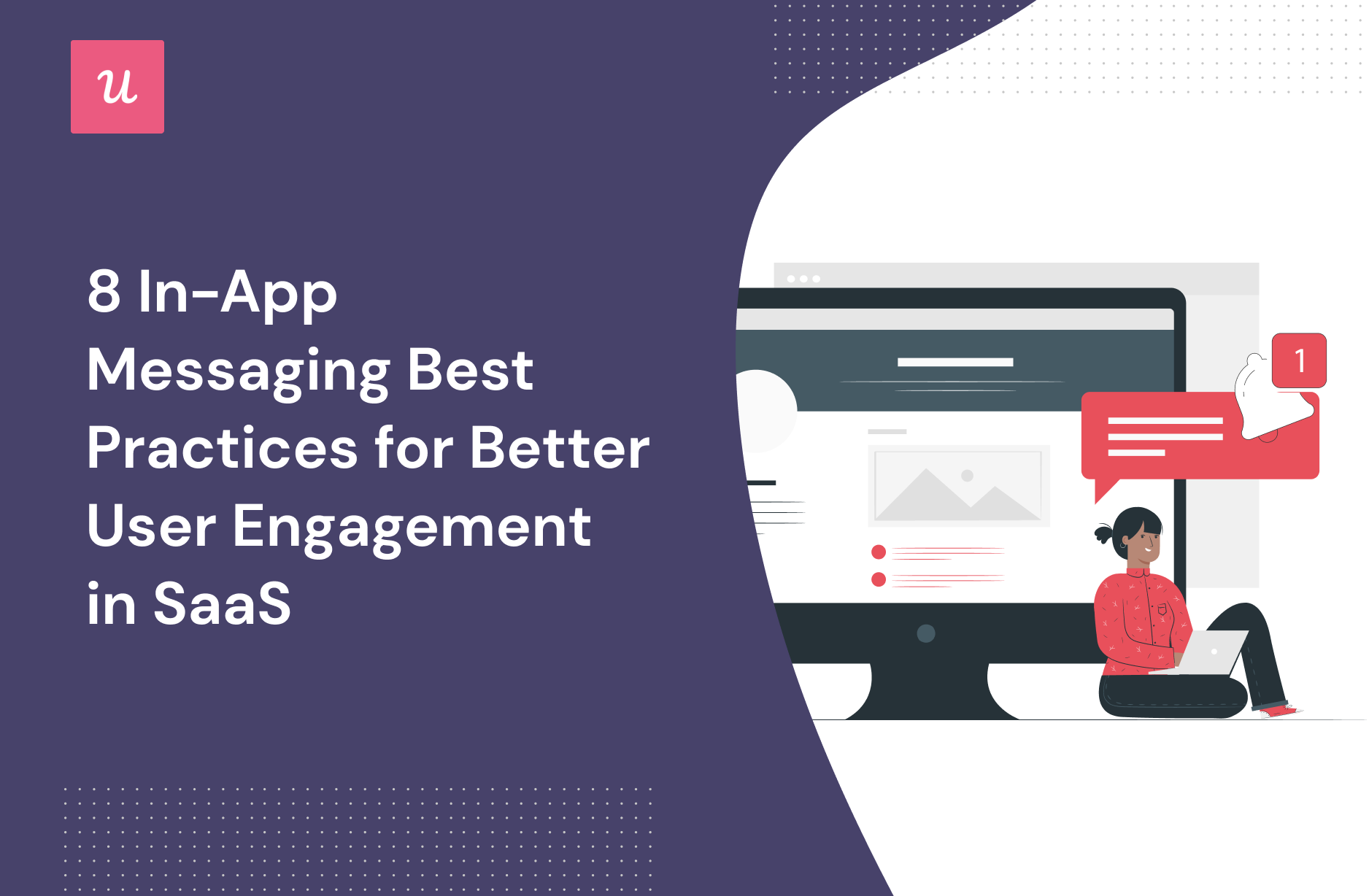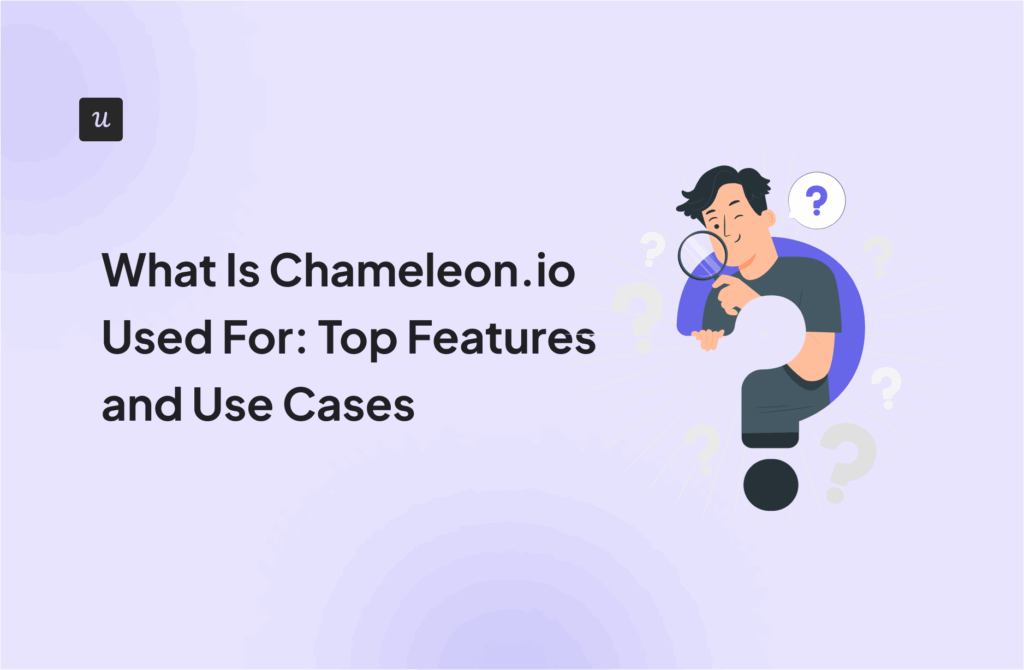
An in-app messaging campaign is at the heart of product communication software when it comes to helping new users navigate. Even so, crafting an effective in-app messaging strategy can be challenging.
When it comes to in-app messaging, poor execution can do more harm than good, dissuading users from using your desktop app in full screen for fear of getting bombarded by popups or notifications.
Conversely, creating relevant and timely in-app messages could increase retention and growth. Here are a few best practices for in-app messaging that will help you engage active users and take your in-app campaigns to the next level.
Try Userpilot Now
See Why 1,000+ Teams Choose Userpilot

Summary of in-app messaging and best practices
- In-app messaging seeks to improve the user experience while push notifications prompt users to return to the product when they’re not currently using it.
- Good design can make your in-app messages more appealing and therefore increase the odds that users actually interact with them.
- You can use in-app messages at every stage of the user journey from onboarding and adoption to expansion or collecting feedback.
- Segmenting your users beforehand can ensure that the in-app messages they see are relevant to their specific use cases and needs.
- Ensure your CTA is clear, visible, and has enough contrast to stand out from the rest of the product’s UI.
- Split-testing is crucial to determining which in-app messages get the job done and which ones are underperforming.
What is an in-app message?
In-app messages are personalized messages that are delivered to your users while they’re actively using your app. In-app messages are also called in-app messaging or in-app notifications, though push notifications do not fall under this category.
What are the pros and cons of in-app messages?
Like any marketing channel, in-app messaging has its own unique set of pros and cons. For instance, a poorly-timed in-app message can actually be an obstacle in the user onboarding process instead of streamlining here.
Here are a few pros and cons to consider before you send your first personalized in-app message.
Pros of using in-app messages
The main appeal of in-app messages is their ability to highlight specific features or prompt a user action with contextual timing. Here are a few benefits that you could reap by using in-app messages:
- Easier to engage with new customers. The earlier stages of the user journey are key since they will determine their impression of how valuable your app is for solving their problems. Using in-app messages, you can streamline onboarding and highlight key features from the get-go.
- Can promote the adoption of a specific feature. If one of your features isn’t getting a lot of traction with your user base, promoting it contextually with in-app messages could draw more attention to the tool or give you insights as to why people aren’t using it.
- Feature announcements or in-app guidances are displayed at the right time. Since in-app messaging tends to appear at the right time, it can ensure that guidance is displayed when a user is trying out a feature for the first time or that they see an announcement after previously requesting a feature.
- Can be personalized and used to collect feedback. In-app messages are great for collecting feedback since they’re highly visible and appear right as the user is interacting with your product.
Cons of using in-app messages
Of course, there are drawbacks to using in-app messaging too. Some of them are inherent to how in-app messages work while others are caused by sloppy execution. Here are a few cons to take note of:
- In-app messages only work when the user is on the app, unlike a push notification. That being the case, in-app messages won’t be very effective at targeting inactive users (though you could use it for re-engagement flows when a user does return.)
- An ill-timed in-app message could annoy users. If users get multiple in-app messages that interrupt key tasks in their workflow then this could be severely detrimental to the user experience and even lead to higher churn rates.
- Excessive in-app messaging can clutter the UI and negatively impact the user experience. Whether it’s for web apps or desktop apps, too many messages popping up can make it harder for users to find the features they actually want to use.
How are in-app messages different from push notifications?

The main difference between in-app messages and push notifications is the intent behind them. Targeted in-app messages seek to improve the app experience while new users are actually using the product.
In contrast, push notifications can make it easier to retain users by bringing a user’s attention back to the app when they’ve been away for a while. Simply put, one is a form of in-app communication while the other is used to notify users when they’re away. You can customize mobile push notifications with Userpilot.
What are in-app messaging use cases?
In-app messages can be used for various product marketing goals. Here are a few of the most common use cases:
- Onboarding: helping users familiarize themselves with the key features (and more advanced features) of your product.
- Mobile Onboarding: offer guidance or support users through features they might not be familiar with.
- Promotions: upgrade coupons, premium feature trials, or limited-time annual discounts.
- New Feature Launch: show off a new feature or get users to opt-in to a closed beta.
- Transactional messages: confirming purchases or prompting payment from trial users.
- Announcements: company news or product updates.
8 In-app messaging best practices to improve user engagement
Contextual and timely messages can make a huge difference since they can boost customer engagement. A good in-app message also prompts users to perform specific actions like testing out new features. or upgrading their subscription to a more expensive plan.
Here are eight best practices to keep in mind when adding an in-app message to your product marketing strategy:
- Always offer an exit option
- Use good designs, rich media, and a color scheme consistent with the rest of your app
- Use multiple types of in-app messaging instead of the same message over and over
- Segment users to make your in-app messages more effective and relevant to their unique customer journey
- Optimize your CTAs to ensure they’re visible, compelling, and further the goals of your app
- Use in-app messages and push notifications to celebrate customer milestones
- Split test your in-app messages to maximize the conversion rate
- Use in-app messages to request user feedback with microsurveys
In-app messaging best practice #1 – Provide a hassle-free exit option
Driving feature adoption with an in-app messaging tool is great but you should never force users to read these messages. Remember, every user is an actual person that deserves the option to exit the popup if they aren’t interested.
In-app messaging best practice #2 – Design it in a visually compelling way
Whether you’re trying to increase engagement or get users to opt-in to a personalized demo, customers expect your in-app messages to be well-designed. No one wants to look at a plain black and white box with plain text.
Every in-app message should be aligned with the color scheme and fonts that your app users have grown accustomed to.
In-app messaging best practice #3 – Use multiple in-app messaging types
Diversifying the types of in-app messages you use can maximize the efficacy of your in-app campaign while also preventing user fatigue that could occur if you use the same UI patterns over and over again.
Here are five examples that you can use as a reference!
Welcome screens for new user onboarding
Kontentino uses a pop-up right at the start of their onboarding flow to give users a heads up on the incoming emails and encourage them to reach out if they have any questions.

In-app checklists for user activation
Postfity tries to minimize their TTV or time-to-value by prompting users to interact with their high-value features through an onboarding checklist.

Interactive walkthroughs for product adoption
Monday makes their walkthrough less intimidating by highlighting one UI element at a time and teaching the user about it before moving to the next step.

Tooltips for product updates and new features
You can also use tooltips to make sure users take notice of new features or other changes that you made in the latest product update.

In-app messaging best practice #4 – Segment your users to send contextual in-app messages
In-app messages are powerful because they have the ability to show up in the right place at the right time. Why not take your contextual edge to the next level by targeting segmented users with your in-app messaging?
User segmentation could help you promote features to low-engagement users or ask your high-engagement users for a review. You can also use targeted messages to generate more expansion revenue.
After all, using personalized messaging on your most engaged customers means you’ll be more likely to achieve successful upsells with your existing users. For instance, Userpilot lets you create segments then target them with your in-app marketing.

In-app messaging best practice #5 – Focus on your Call-to-Action (CTA)
You could have a full-screen modal but all the attention in the world won’t do you any good if your call to action isn’t good enough to convert. Your call-to-action button should use inspiring microcopy, eye-catching colors, and visible placement to keep conversion rates high.
In most cases, you should also stick to a single CTA. Having two or more CTAs could put users into a state of analysis which would lead to them just closing the popup without performing any of the listed actions.
Furthermore, you should refrain from using too much text as this could make the CTA less visible while also increasing the perceived difficulty of engaging with the popup. Remember, more is less.
In-app messaging best practice #6 – Use in-app messages to celebrate customer milestones
Figuring out how to use a new tool can feel like a chore but, when your achievements are celebrated, that all changes. The Fogg Behavior Model states that the three elements need for an action to occur are motivation, ability, and prompt.
That being the case, using periodic celebration messages can keep your new users motivated throughout their user journey. It’s the same reason why onboarding gamification is so effective at keeping users engaged as they get to know all the features that your platform has to offer.

Calendly’s congratulatory modals are a great example of how to inspire your users with in-app messaging.
In-app messaging best practice #7 – Do A/B testing to optimize your in-app messages
While A/B testing is often associated with email marketing, paid ads, and optimizing landing pages it’s just as important for your in-app marketing. Any senior content marketing manager can tell you that it’s quite rare to get things perfectly the first time.

Showing different variants of your in-app messaging to different user segments and seeing how they react can yield useful insights — which you can then use as a guide when creating in-app messages in the future.
This also gives you the opportunity to isolate specific elements in your messaging to see which ones have a positive or negative effect. Whether it’s button color, font size, or how you phrase your CTA the sky is the limit when it comes to split-testing.
In-app messaging best practice #8 – Use in-app messages to request user feedback
There’s nothing wrong with emailing a survey to your customers but you have to realize that the chances of them missing it is always there. In contrast, in-app surveys are guaranteed to be seen which increases the odds that the user logs their feedback instead of ignoring it.

You can also run NPS surveys from within your product to see how satisfied they are with the overall user experience. Speaking of net promoter scores, segmented in-app messaging is a great way to gather feedback from both promoters and detractors of your product.
Staying in the loop on which features your promoters love could help you decide which aspects of your product you should be actively promoting. On the other hand, knowing what negatively affects the user experience for detractors allows you to proactively address these problems.
Conclusion
Now that you’re well aware of all the applications and best practices associated with in-app messaging strategies, you should consider applying that knowledge in the context of product experiments.
Product experimentation can give you a deeper understanding of your user base, provide guidance on what type of messaging works best, and pave the way for smart goal-setting throughout the development cycle.
Want to see how in-app messages can impact user behavior and how to create them code-free? Get your Userpilot Demo to get started.







